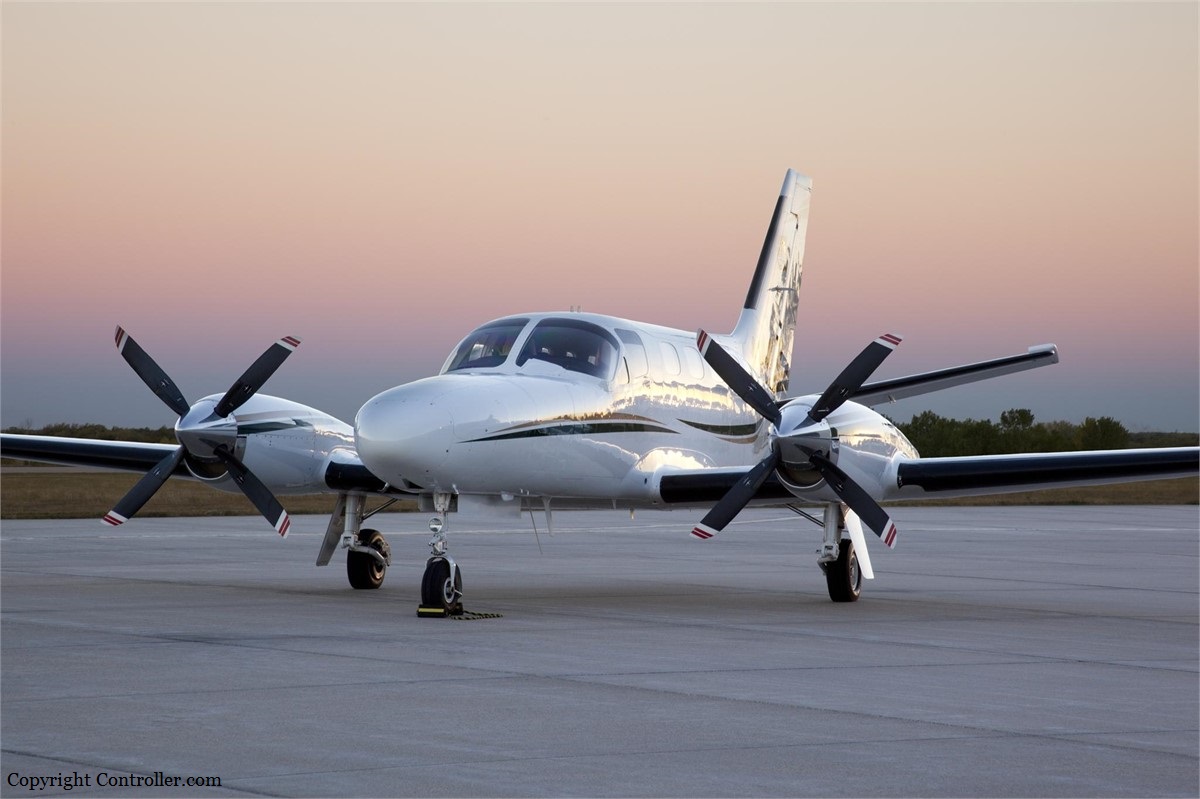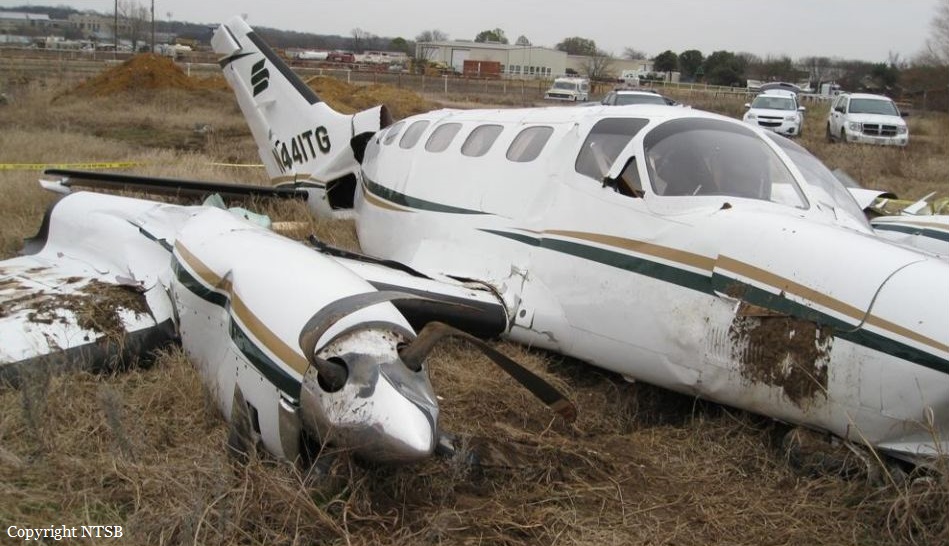Crash of a Cessna 441 Conquest II in Denton: 1 killed
Date & Time:
Feb 4, 2015 at 2109 LT
Registration:
N441TG
Survivors:
No
Schedule:
Willmar - Denton
MSN:
441-200
YOM:
1981
Crew on board:
1
Crew fatalities:
Pax on board:
0
Pax fatalities:
Other fatalities:
Total fatalities:
1
Aircraft flight hours:
3830
Circumstances:
The instrument-rated commercial pilot was approaching the destination airport after a cross country flight in night instrument meteorological conditions. According to radar track data and air traffic control communications, while receiving radar vectors to the final approach course, the pilot did not always immediately comply with assigned headings and, on several occasions, allowed the airplane to descend below assigned altitudes. According to airplane performance calculations based on radar track and GPS data, the pilot made an engine power reduction about 2.5 minutes before the accident as he maneuvered toward the final approach fix. Following the engine power reduction, the airplane's airspeed decreased from 162 to 75 knots calibrated airspeed, and the angle of attack increased from 2.7° to 14°. About 4 miles from the final approach fix, the airplane descended below the specified minimum altitude for that segment of the instrument approach. The tower controller subsequently alerted the pilot of the airplane's low altitude, and the pilot replied that he would climb. At the time of the altitude alert, the airplane was 500 ft below the specified minimum altitude of 2,000 ft mean sea level. According to airplane performance calculations, 5 seconds after the tower controller told the pilot to check his altitude, the pilot made an abrupt elevator-up input that further decreased airspeed, and the airplane entered an aerodynamic stall. A witness saw the airplane abruptly transition from a straight-and-level flight attitude to a nose-down, steep left bank, vertical descent toward the ground, consistent with the stall. Additionally, a review of security camera footage established that the airplane had transitioned from a wings-level descent to a near vertical spiraling descent. A post accident examination of the airplane did not reveal any anomalies that would have precluded normal operation during the accident flight. Although the pilot had monocular vision following a childhood injury that resulted in very limited vision in his left eye, he had passed a medical flight test and received a Statement of Demonstrated Ability. The pilot had flown for several decades with monocular vision and, as such, his lack of binocular depth perception likely did not impede his ability to monitor the cockpit instrumentation during the accident flight. The pilot had recently purchased the airplane, and records indicated that he had obtained make and model specific training about 1 month before the accident and had flown the airplane about 10 hours before the accident flight. The pilot's instrument proficiency and night currency could not be determined from the available records; therefore, it could not be determined whether a lack of recent instrument or night experience contributed to the pilot's difficulty in maintaining control of the airplane.
Probable cause:
The pilot's failure to maintain adequate airspeed during the instrument approach in night instrument meteorological conditions, which resulted in the airplane exceeding its critical angle of attack and an aerodynamic stall/spin at a low altitude.
Final Report:





